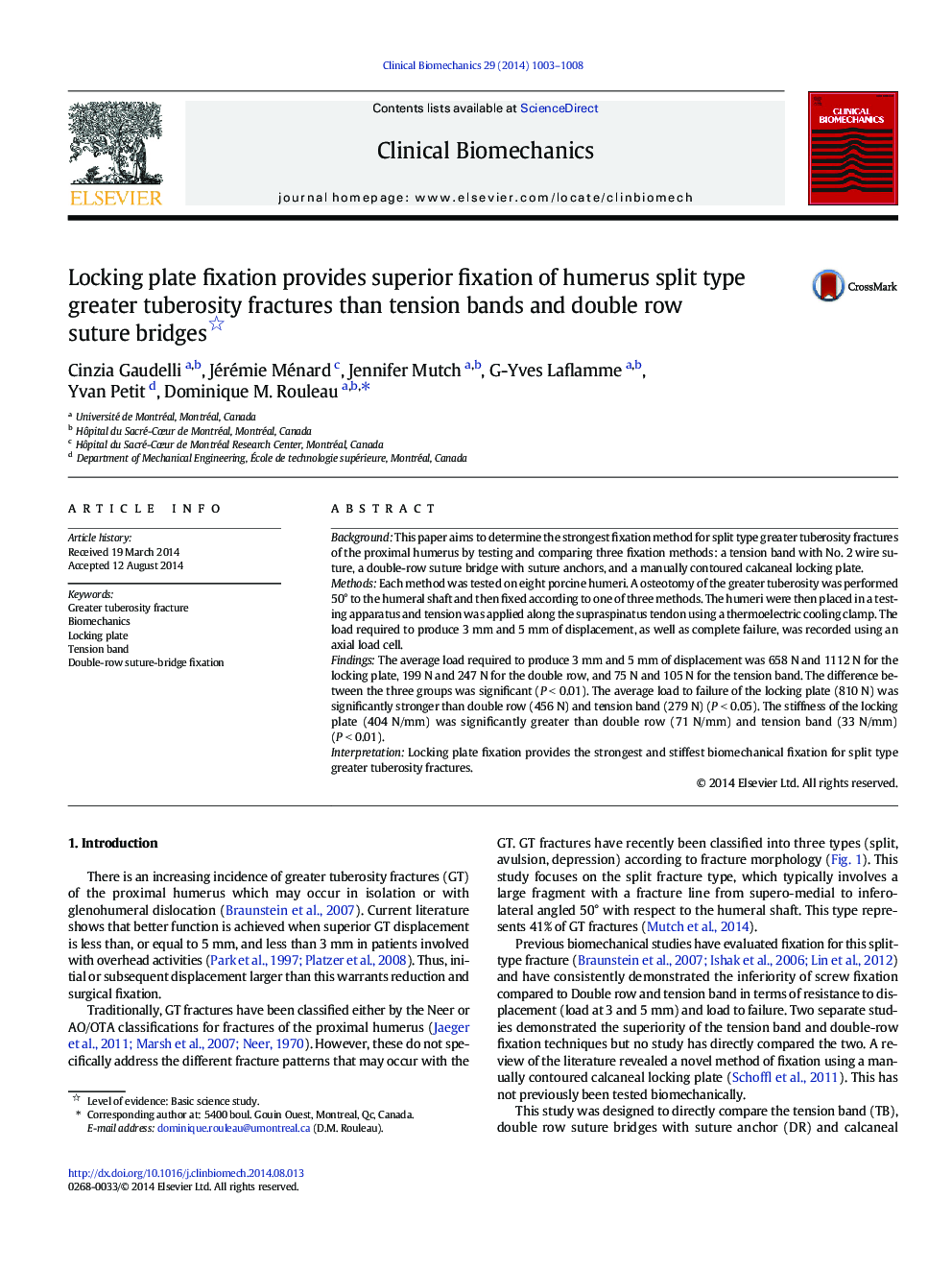| کد مقاله | کد نشریه | سال انتشار | مقاله انگلیسی | نسخه تمام متن |
|---|---|---|---|---|
| 4050300 | 1264920 | 2014 | 6 صفحه PDF | دانلود رایگان |

• Locking plate provides the strongest and stiffest fixation for split type GT fracture.
• Tension bands and double row suture bridges have similar construct stiffness.
• The locking plate construct strength is higher than the muscle tissues strength.
• Only 25% of locking plate construct has reached the 5 mm of displacement.
BackgroundThis paper aims to determine the strongest fixation method for split type greater tuberosity fractures of the proximal humerus by testing and comparing three fixation methods: a tension band with No. 2 wire suture, a double-row suture bridge with suture anchors, and a manually contoured calcaneal locking plate.MethodsEach method was tested on eight porcine humeri. A osteotomy of the greater tuberosity was performed 50° to the humeral shaft and then fixed according to one of three methods. The humeri were then placed in a testing apparatus and tension was applied along the supraspinatus tendon using a thermoelectric cooling clamp. The load required to produce 3 mm and 5 mm of displacement, as well as complete failure, was recorded using an axial load cell.FindingsThe average load required to produce 3 mm and 5 mm of displacement was 658 N and 1112 N for the locking plate, 199 N and 247 N for the double row, and 75 N and 105 N for the tension band. The difference between the three groups was significant (P < 0.01). The average load to failure of the locking plate (810 N) was significantly stronger than double row (456 N) and tension band (279 N) (P < 0.05). The stiffness of the locking plate (404 N/mm) was significantly greater than double row (71 N/mm) and tension band (33 N/mm) (P < 0.01).InterpretationLocking plate fixation provides the strongest and stiffest biomechanical fixation for split type greater tuberosity fractures.
Journal: Clinical Biomechanics - Volume 29, Issue 9, November 2014, Pages 1003–1008